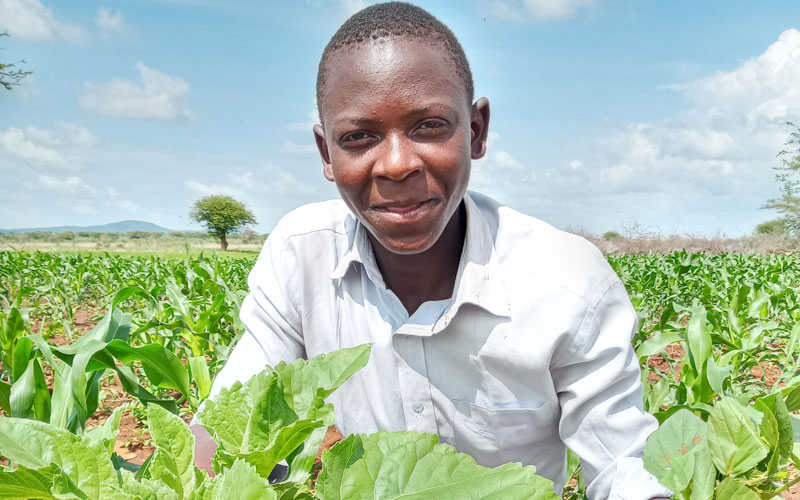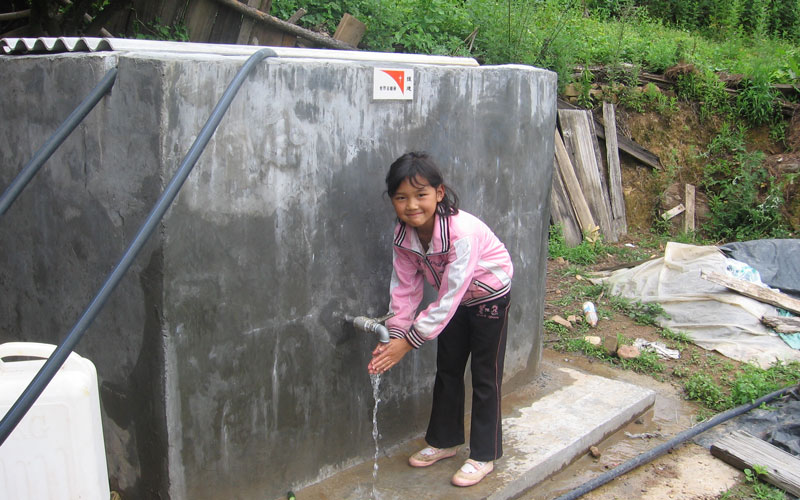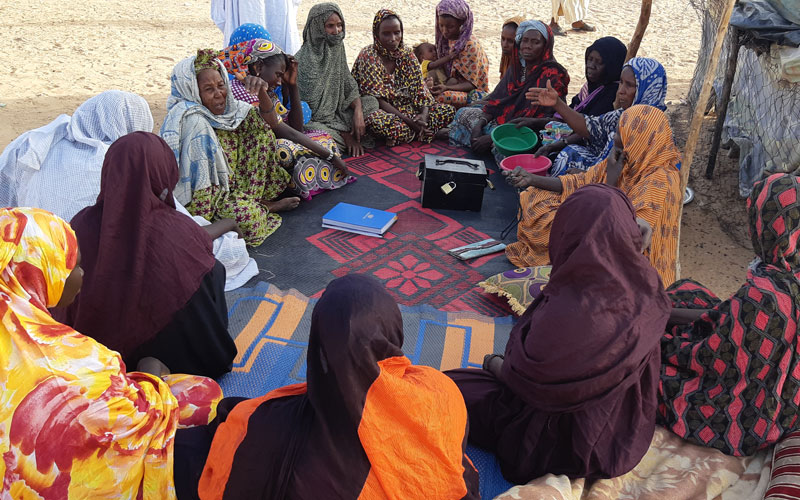The modern-day concept of international development assistance dates back to 1948. This was when the United States provided what was called “foreign aid” to Europe as it recovered from the destruction of the Second World War. Today international development assistance (or “official development assistance” as it’s also commonly known) tops
US$165 billion annually with numerous countries distributing portions of their income abroad. It’s not a perfect system and has not achieved the elimination of poverty that is its chief goal, but it remains a vital tool for meeting the world’s toughest challenges.
Here’s what you need to know about international development assistance.
- What is international development assistance?
- Why does Canada engage in international development assistance?
- How much does Canada give annually in international development assistance?
- How does international development assistance get distributed by government and organizations like World Vision?
- What are the criticisms of international development assistance?
- What innovation in international development has there been?
- What role do the local recipients of international development assistance play in the process of distribution?
- Is sustainable development the same as international development?
 In Eravur Pattu, Sri Lanka, development assistance helped youth in the community with vocational training so they could develop income-generating skills such as sewing. Photo: Pio J Navinthan
In Eravur Pattu, Sri Lanka, development assistance helped youth in the community with vocational training so they could develop income-generating skills such as sewing. Photo: Pio J Navinthan
1. What is international development assistance?
International development assistance is the deployment of resources to economically-disadvantaged areas around the world to reduce and eliminate the root causes and effects of poverty. Below are some examples.
Canada contributed to a United Nations-backed
wetlands restoration project in Uganda. It’s a great example of how development in one area of concern can trigger positive development in other areas that at first don’t appear to be related.
In the case of western Uganda’s Sheema district, the wetlands had been drained to grow crops and graze cattle. Ironically, with the natural source of water depleted the land eventually dried up and could not support agriculture. The community then experienced malnutrition as food and water ran short.
The restoration project worked to restore water levels and the natural vegetation. (
Wetlands regulate water flows during floods and replenish water during drought.) Crucially, it has also provided the community with a path to sustainable development that won’t drive people to degrade the source of their wellbeing.
The newly revitalized wetlands now serve multiple duties in the community: with the help of solar-powered pumps they irrigate the land, providing enough food for families to eat and sell locally; they support beekeeping, which in turn generates income that funds a credit program backing even more local businesses; the now abundant grass is harvested and sold to outside communities as mulch for banana plantations; and women have been particularly empowered by these opportunities and are now in a position to support their households.
Find out what international development assistance projects the federal government is funding by using
Global Affairs Canada’s Project Browser tool.
World Vision Canada’s Area Programs are a key plank of our international development approach. Take, for example, the community of El Milagro in Peru. In partnership with the community,
WVC operated a program here for over 10 years (April 2007 to September 2021). At the onset, the community faced a number of challenges, including children who were chronically malnourished, inadequate education and lack of economic opportunity. The program focused on improving these areas.
When this Area Program ended, significant strides had been made as carefully measured through a number of indicators. The number of children under 5 showing proper physical growth and development increased to 72 per cent from 29 per cent. Almost 100 teachers received annual training helping them to strengthen their capacity to teach their students. Three entrepreneurial centres were established and benefitted 900 young people every year. This laid a foundation for productive employment and diminishing the allure of gang life that had been a problem.
World Vision Canada engages in international development work like this around the world. You can check out a detailed overview in our annual
Results Reporting. There you can see in facts and figures how our “graduating communities” have hit their development goals.
2.Why does Canada engage in international development assistance?
When countries develop economically, they’re more likely to be stable and peaceful because they can comfortably provide for the basic needs of a majority of their citizens. A more stable, peaceful world is a win for everyone.
 Nutritious food makes for healthy kids. Here in Manonga, Tanzania, development assistance helped this field increase its life-sustaining harvest. Photo: Dominic Mbamba
Nutritious food makes for healthy kids. Here in Manonga, Tanzania, development assistance helped this field increase its life-sustaining harvest. Photo: Dominic Mbamba
3. How much does Canada give annually in international development assistance?
In its 2019-2020 fiscal year (April 1 – March 31) the Canadian government distributed $6.2 billion via Global Affairs and other departments to various projects and programs. In 2020 Canada spent about 0.31% of its gross national income on development assistance. The
United Nations has set a target of 0.7% of gross national income for all countries that give assistance.
4. How does international development assistance get distributed by government and organizations like World Vision?
Every organization has its own process for getting assistance to countries in need.
In addition to distributing assistance directly through Global Affairs Canada, Canada’s government typically works with a range of partners. These include non-governmental organizations like World Vision Canada, and also the private sector, private foundations, social entrepreneurs, and local partners and communities.
Thanks to the generosity of its donors World Vision Canada also runs its own separately-funded programs that focus on economic and social development. In 2020,
World Vision Canada distributed over $320 million in relief, development and advocacy assistance. We have deep roots in international development and work through a number of programs including, but not limited to:
Area Programs: We work in vulnerable communities across dozens of countries where we deploy multi-year technical programs to address various challenges. These challenges range from education and health to economic development, gender equity and much more. Improvements in these areas help families and their communities lay the foundation for a more prosperous, independent future.
STEP: In partnership with government and private partners, this three-year project (2017-2020) targeted Senegal’s Kolda region with the goal of increasing the economic prosperity of its youth. With a focus on the out-of-school, unemployed and functionally illiterate, the project successfully reached over 1,000 youth and educators. Just over 65 per cent of participating youths obtained either an internship or job opportunity, and 52 businesses were started with savings or other external funding.
 Mothers from Soin, Kenya, benefitted from development assistance provided by World Vision to equip the maternity ward at the local health centre. Photo: Jacklyne Kurui
Mothers from Soin, Kenya, benefitted from development assistance provided by World Vision to equip the maternity ward at the local health centre. Photo: Jacklyne Kurui
5. What are the criticisms of international development assistance?
The leading argument is that money is better spent dealing with problems “at home.”
Others argue that this assistance is too often self-serving. Meaning the assistance is predicated on the recipient spending the money on the donor country’s goods and services. This is called “tied aid” and there are some who report that
half of all international development assistance falls into this category. (Ironically, the existence of tied aid at least partly refutes the critics making the first argument about spending at home first.)
Other arguments include that development assistance simply doesn’t work, and funds are misspent or stolen by corrupt governments and other local actors.
There is even
debate over whether or not it’s accurate to call only the work done in the developing world “international development,” but not use the same term for work done in poverty-stricken areas of the developed world.
 Development assistance from World Vision helped build reservoirs and bring clean, piped water to Yulong, China. Photo: He Yujuan
Development assistance from World Vision helped build reservoirs and bring clean, piped water to Yulong, China. Photo: He Yujuan
6. What innovation in international development has there been?
The main innovation has been an increasing focus on making private capital a part of the international development mix. In the past, such work was almost exclusively the domain of governments and NGOs.
What is called “impact investing” is poised to play an increasing role in delivering assistance with the potential for a modest return on investment. Access to a capital pool estimated to be over US$700 billion could make a significant difference in international development efforts.
Canada’s government has also been active over the last decade in setting up, or working with, organizations (including World Vision Canada) whose mission is to find innovative solutions and delivery methods for development assistance. Grand Challenges is one such organization and is funding dozens of projects currently at different stages of readiness or that are already deployed. These include: a
“smartcare” project in Vietnam that uses an online platform to help parents support children with autism; in Brazil and Mozambique, a low-cost technology that uses light instead of ultrasound to
detect premature births so that newborns can receive proper care; and
solar-powered water pumps in South Sudan that may regenerate agriculture to help solve a humanitarian crisis caused by a combination of drought and conflict.
7. What role do the local recipients of international development assistance play in the process of distribution?
Every government and organization has its own processes for managing its relationship with the recipients of assistance.
In World Vision Canada’s case, every child, parent and community we work with are partners, not passive recipients of assistance. Our assistance aims to empower them for self-sufficiency. We never dictate what assistance will be provided. Instead, we sit down and speak with the community to learn what they feel are their greatest needs. In keeping with our mission to serve and protect children, we especially focus on the prevailing conditions among children and women.
Our Area Program managers and their staff are always drawn from the local community or country. They engage in exhaustive research—consisting of statistical reporting and interviewing of all stakeholder representatives—to produce an assessment report that details the nature and scope of the challenges.
Based on these findings World Vision consults with the community to determine several areas of focus such as health, education, and water, sanitation and hygiene (WASH). Various programs are then put in place to address those challenges over a period of 10 years or more.
Some of the specific ways in which community members participate include the formation of Children’s Clubs that serve to formally advocate for children’s rights, and savings and loans associations that help mainly women leverage
micro-finance to earn or increase their livelihood.
 Women-headed savings groups like these in Tenmiya, Mauritania, give participants a leg-up to start businesses and improve their livelihood. Photo: Sidina Ould Isselmou
Women-headed savings groups like these in Tenmiya, Mauritania, give participants a leg-up to start businesses and improve their livelihood. Photo: Sidina Ould Isselmou
8. Is sustainable development the same as international development?
Because talk of sustainable development is so common these days, it’s easy to assume that whatever development is occurring is sustainable. But technically, there is a difference between international development and sustainable development. The former is a broad term that includes development meant to benefit a current population at the current time. However, sustainable development takes a longer-term view and considers the impact of development on both the environment and future generations.
The most commonly accepted definition, and the one officially adopted by the Canadian government as well, originates from the
1983 report of the World Commission on Environment and Development. It defines sustainable development as “development that meets the needs of the present without compromising the ability of future generations to meet their own needs.”
What does this look like in practice? It means society should adopt lifestyles that are “within the planet’s ecological means” and that resources should be distributed equitably enough to meet essential needs. This is what the Commission recognized as limits to growth. These limits can change upward, but they’re a function of technology levels, social organization around environmental resources and the ability of the biosphere to absorb the impact of human activity.
The United Nations Education, Scientific and Cultural Organization (UNESCO) further refines the meaning of sustainable development to include
four intertwined factors that must be in balance: society, environment, culture and economy.